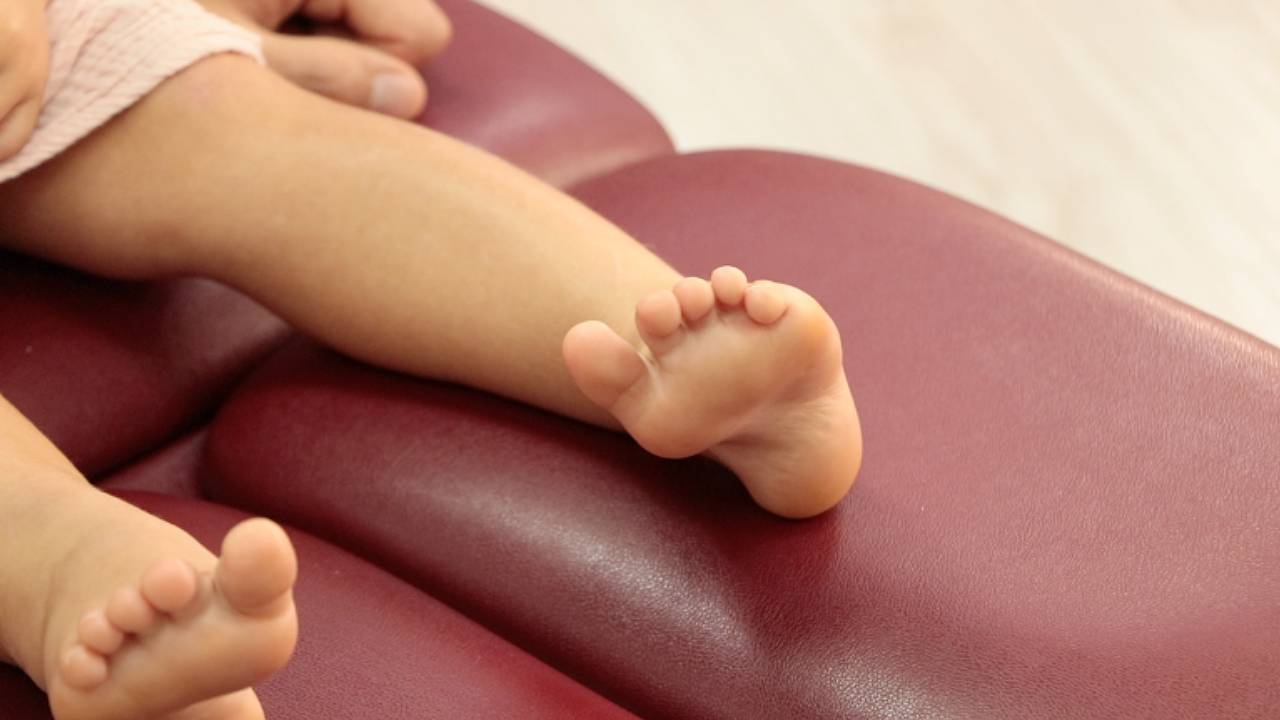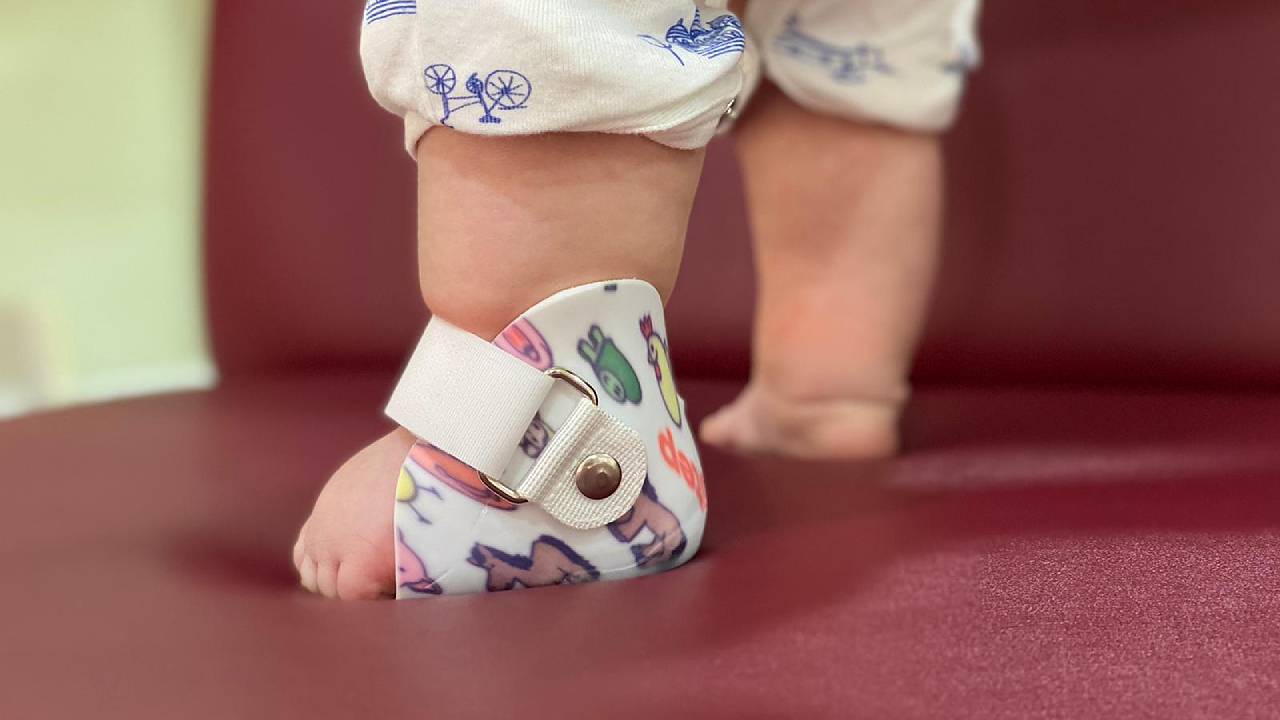Metatarsus adductus is a common foot deformity that affects approximately 1 in 1000 children at birth.1 Children diagnosed with metatarsus adductus have a visible deformity where the forefoot curves inwards to the heel. In some cases, patients suffer bilateral metatarsus adductus, meaning both feet are affected by this condition.
Babies with metatarsus adductus can be at risk for developing further secondary conditions in the future such as symptomatic bunions, and developmental dysplasia (DDH) where the femur slips in and out of the hip socket, resulting in a dislocation of the joint.
The appropriate care should be sought from a qualified paediatric podiatrist depending on the flexibility of the affected foot and the severity of the condition. This is to ensure that early intervention can be implemented for the best outcome and prevent the development of secondary conditions.

Signs and Symptoms Of Metatarsus Adductus
During the early stages of your child’s development or at birth, you or your physician may notice:
- A curved “C” shape in your child’s foot
- Increased pain in areas of abrasion and pressure
- Increased pain with a rise in activity level and shoe wearing
- In more severe cases, the forefoot is rotated inwards and points towards the midline of the body while the outside of the foot is rounded.
Metatarsus adductus may not be painful in the initial phases but will start to display symptoms of pain over time. The altered alignment of the forefoot for a prolonged period will place greater stress on other joints of the body and can lead to conditions such as early-onset osteoarthritis.
Risk Factors For Metatarsus Adductus
- Breech position while the fetus is developing intrauterine
- Low amniotic fluid while the fetus is developing intrauterine
- Family history of metatarsus adductus
Seek professional advice as soon as possible if you suspect that your child may have metatarsus adductus. While some cases resolve themselves over time, others will have long-lasting effects that can affect the mobility of your child.
A podiatrist will conduct a comprehensive assessment of the child’s family history and a physical examination before a diagnosis can be made. The use of specialised imaging equipment such as X-rays or MRIs may also be used to assess the extent and severity of the condition, aiding in the development of a more precise and suitable approach.
How is Metatarsus Adductus Managed?
The resolution of metatarsus adductus is dependent on the severity of the deformity and the age of the child when the condition is identified. If metatarsus adductus is observed at birth, specialised serial casting can be applied to rectify the foot alignment.

If the child is already walking by the time the condition is identified, the use of paediatric ankle foot orthotics (AFOs) or custom foot orthoses may be required as a long-term solution to help support and guide the foot. This evenly distributes the body’s weight across the foot to avoid overloading and damaging the small joints, allowing for the development of a more natural foot alignment.
Frequently Asked Questions
While in a standing position, you child’s feet will not connect with the ground straight on but in a slanted manner due to the curved “C” shape of the soles. If your child is already walking in shoes, they may have calluses on the outside of their feet due to pressure from a supinated walking style. Be sure to get your child examined by a podiatrist if you have noticed unusual callus spots as this can cause additional pain or discomfort while walking or be indicative of a biomechanical issue.
Metatarsus adductus should be addressed as soon as it is diagnosed. Early intervention is key, and the younger the child is, the more malleable their bones will be, making them more receptive to guided growth from an orthotic or custom-made device.
Unfortunately, massages will not change the shape or improve the development of your child’s feet. While a massage will help alleviate any tightness or soreness your child may be experiencing from their daily activities, it needs to be applied in conjunction with a brace or support to accurately guide the growth of your child’s feet.
This depends on the severity of the case. Metatarsus adductus will resolve on its own in some mild situations but severe cases will require immediate attention and care.
While some paediatricians may recommend the “wait and see” approach, this could cause your child’s feet to become stiff and deformed or develop secondary conditions like bunions and/or DDH in the future. Seeking prompt intervention upon the appearance of problematic metatarsus adductus symptoms increases the likelihood of a successful resolution without the need for invasive surgery options in the future.




